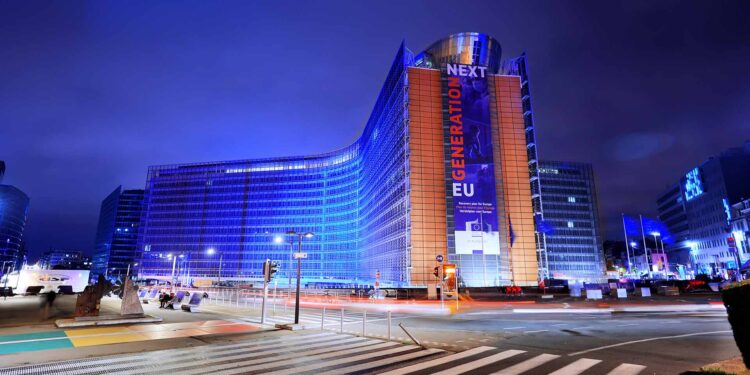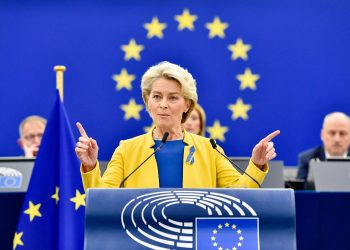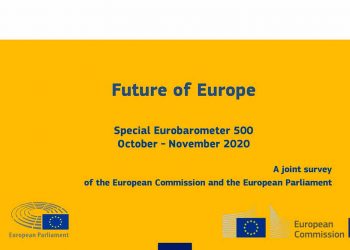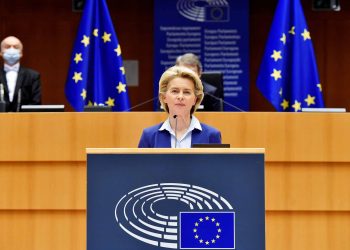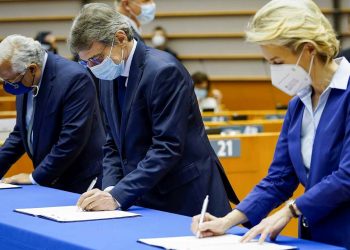The European Commission presented its guidance on the implementation of ‘do no significant harm’ in the context of the Recovery and Resilience Facility (RRF). The RRF, the key instrument at the heart of NextGenerationEU, will make €672.5 billion in loans and grants available to support reforms and investments in Member States.
The Commission is currently engaging in intensive dialogue with all Member States on the preparation of their recovery and resilience plans. Member States have been able to present their draft recovery and resilience plans to the Commission since 15 October 2020. They will have the opportunity to revise and finalise their plans following the initial presentation of the drafts.They will be able to submit the final versions of their recovery and resilience plans once RRF is legally in force. The plans should be presented by 30 April, as a rule.
EU guidelines on Recovery plans
The Commission provided Member States with clear guidance to support them in the preparation of the recovery and resilience plans in September 2020. It reflects that the scope of the RRF is now structured around six pillars, as well as the fact that Member States should explain how the plans contribute to equality and the principles of the European Pillar of Social Rights. Plans should also include a summary of the consultation process at national level. Also a a presentation of the controls and audit system put in place to ensure that the financial interests of the Union are protected. The guidance also asks Member States to detail an outline of their communication plans in order to make sure that EU support is visible to all Europeans who benefit from it.
Commission works closely with Member States
This guidance aims to support Member States in ensuring that all investments and reforms they propose to be financed by the RRF do no significant harm to the EU’s environmental objectives, within the meaning set out in the Taxonomy Regulation. It outlines key principles and a two-step methodology for the assessment of ‘do no significant harm’ in the context of the RRF as a way to facilitate the work of Member States in the preparation of their recovery and resilience plans. Respecting the ‘do no significant harm’ principle is a precondition for the endorsement of the plans by the Commission and the Council that go in line with the RRF Regulation.
Commission staff are working closely with Member States’ authorities to ensure that this will be a smooth and swift process, leading up to the presentation of the plans. Facilitating the green transition is a key objective of the RRF. The ‘do no significant harm’ provisions are a crucial tool for this alongside the requirement that a minimum of 37% of expenditure on investments and reforms contained in each national recovery and resilience plan should support climate objectives. The presentation of this guidance follows the European Parliament’s approval of Recovery and Resilience Facility earlier this week.
Our ally and our hope is NextGenerationEU – EUR 750 billion
President Ursula von der Leyen participated in a signature ceremony and press conference this morning alongside European Parliament President David Sassoli and Prime Minister António Costa for the rotating Presidency of the Council of the EU to mark the approval by the European Parliament and the Council of the RRF Regulation.
What the money will be invested in
President Ursula von der Leyen said: “I would like to congratulate the Council and the Parliament for the final adoption now of the regulation. This is indeed a very historic moment. We are fighting this pandemic and the severe health crisis with the vaccines. The vaccines are our ally and hope. But we should never forget the second enormous crisis we have, this is the economic crisis. And there, our ally and our hope is NextGenerationEU. €750 billion to support our citizens to keep their jobs, to support companies to stay in business, and to support communities to maintain their social fabric. No Member State on its own would have been able to master this economic crisis just on its own and alone.”
Lex Signing ceremony on Recovery and Resilience Facility
Grants and loans: What the Recovery EU money will be invested in
The European Commission welcomes the European Parliament’s vote today, confirming the political agreement reached on the Recovery and Resilience Facility (RRF) Regulation in December 2020. This marks an important step towards making €672.5 billion in loans and grants available to Member States to support reforms and investments.
The RRF is the key instrument at the heart of NextGenerationEU, the EU’s plan for emerging stronger from the COVID-19 pandemic. It will play a crucial role in helping Europe recover from the economic and social impact of the pandemic and will help to make the EU’s economies and societies more resilient and secure the green and digital transitions.
Recovery and resilience plans
The approval of the European Parliament paves the way for the RRF to come into force in the second half of February. Member States will then be able to officially submit their national recovery and resilience plans, which will be assessed by the Commission and adopted by the Council. The recovery and resilience plans set out the reforms and public investment projects that will be supported by the RRF. The Commission works already in an intensive dialogue with all Member States on the preparation of these plans.
Pre-financing of 13% of the total amount allocated to Member States will be made available once recovery and resilience plans are approved, to ensure that RRF financing arrives where it is needed as quickly as possible.
Structure and objectives of the Recovery and Resilience Facility
The RRF is structured around six pillars: green transition; digital transformation; economic cohesion, productivity and competitiveness; social and territorial cohesion; health, economic, social and institutional resilience; policies for the next generation.
It will help the EU achieve its target of climate neutrality by 2050 and set it on a path of digital transition, creating jobs and spurring growth in the process. A minimum of 37% of expenditure on investments and reforms contained in each national recovery and resilience plan should support climate objectives. A minimum of 20% of expenditure on investments and reforms contained in each national plan should support the digital transition.
It will also help Member States effectively address the challenges identified in relevant country-specific recommendations under the European Semester framework of economic and social policy coordination.
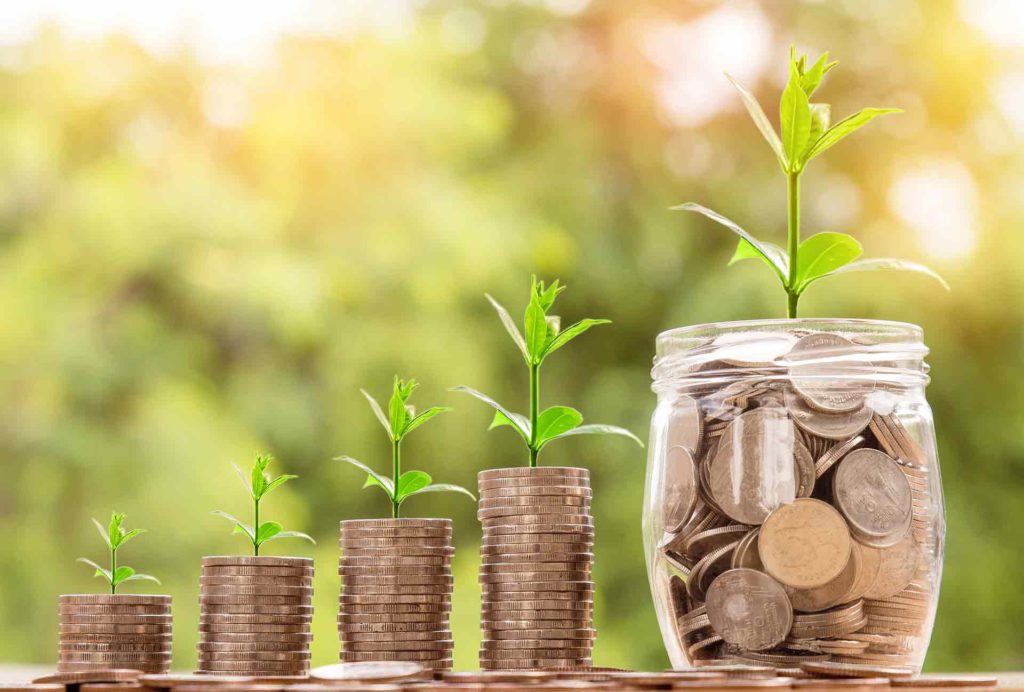
EU taxonomy for sustainable activities
In order to meet the EU’s climate and energy targets for 2030 and reach the objectives of the European Green Deal, it is fundamental to direct investments towards sustainable projects and activities. The current COVID-19 pandemic has reinforced the need to redirect capital flows towards sustainable projects in order to make our economies, businesses and societies, in particular health systems, more resilient against climate and environmental shocks and risks with clear co-benefits for health.
To achieve this, a common language and a clear definition of what is ‘sustainable’ is needed. This is why the action plan on financing sustainable growth called for the creation of a common classification system for sustainable economic activities, or an “EU taxonomy”.
What is the EU taxonomy
The EU taxonomy is a classification system, establishing a list of environmentally sustainable economic activities. The EU taxonomy is an important enabler to scale up sustainable investment and to implement the European Green Deal. Notably, by providing appropriate definitions to companies, investors and policymakers on which economic activities can be considered environmentally sustainable, it is expected to create security for investors, protect private investors from greenwashing, help companies to plan the transition, mitigate market fragmentation and eventually help shift investments where they are most needed.
The Commission is currently preparing an IT tool that will facilitate the use of the taxonomy by allowing users to navigate easily through the taxonomy. The tool will be available from the beginning of 2021.
Taxonomy Regulation and delegated acts
The Taxonomy Regulation published in the Official Journal of the European Union on 22 June 2020 and entered into force on 12 July 2020. It establishes the framework for the EU taxonomy by setting out four overarching conditions that an economic activity has to meet in order to qualify as environmentally sustainable.
The Taxonomy Regulation establishes six environmental objectives
- Climate change mitigation
- Climate change adaptation
- The sustainable use and protection of water and marine resources
- The transition to a circular economy
- Pollution prevention and control
- The protection and restoration of biodiversity and ecosystems
Different means can be required for an activity to make a substantial contribution to each objective.
The Platform on sustainable finance
The development of the EU taxonomy relies on extensive input from experts from across the economy and civil society. This is why the new Platform on sustainable finance goes with advising the European Commission on further developing the EU taxonomy, improving its usability and exploring its extension to social objectives, activities that significantly harm the environment or activities that are neutral towards the environment.

